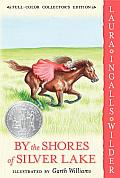The Lost Opportunity in Zero Dark Thirty
In contrast, the historical distortions of Zero Dark Thirty are less apparent but also less necessary. The major issue, which has reached the level of critical letters from a bipartisan group of US Senators, is whether torturous interrogation methods led to information necessary for finding Osama bin Laden in Abbottabad, Pakistan. Much of the historical record is secret and debated, but there have been enough revelations to say that Zero Dark Thirty skews reality.
The movie opens with a harsh, extended torture-interrogation scene, the first that heroine Maya watches. As Steve Coll in The New York Review of Books explains:
There can be no mistaking what Zero Dark Thirty shows: torture plays an outsized part in Maya’s success. The first detainee she helps to interrogate is Ammar. He is tortured extensively in the film’s opening sequence, immediately after we hear the voices of World Trade Center victims. Ammar’s face is swollen; we see him strung up by ropes, waterboarded, sexually humiliated, deprived of sleep through the blasting of loud music, and stuffed into a small wooden box. During his ordeal, Ammar does not initially give up reliable information. After he has been subdued and fooled into thinking that he has already been cooperative while delirious, however, he gives up vital intelligence about the courier over a comfortable meal.Another prisoner gives Maya information while telling her, “I have no desire to be tortured again.” Coll concludes, “In virtually every instance in the film where Maya extracts important clues from prisoners, then, torture is a factor.” Those particular detainees are fictional composites, though the movie refers to other, real prisoners, such as “KSM,” or Khalid Sheikh Muhammed.
Some viewers might regard Ammar’s final confession in the midst of warm hospitality as an example of torture that did not work, or worked only partially. In fact, this sequence of the film depicts precisely how the CIA’s coercive interrogation regime was constructed to break prisoners…
I think Zero Dark Thirty also suggests that the torture is horrifying, undesirable, even possibly harmful to everyone involved. It seems to burn out Maya’s mentor from the first scene. There’s a strong but implicit theme that Maya’s dogged, generally nonviolent techniques are better. In essence, the movie implies that she and her CIA colleagues have to grow beyond the violent interrogations. But the movie leaves out historical details that would have strengthened that theme.
First of all, the movie doesn’t show Maya or other investigators being thrown off by false leads that prisoners offered just to stop torture. It shows other sorts of dead ends and a sneak attack on Maya’s agency by Islamist terrorists. But Zero Dark Thirty ignores the drama inherent in one powerful argument against torture: it doesn’t produce reliable information.
Though the movie shows Maya debating with her colleagues and higher-ups about her conclusions, it never shows how some officials, notably the FBI, objected to the use of torture. The filmmakers bypassed that source of drama and the chance to show character growth.
Furthermore, Zero Dark Thirty presents torture sessions as directed, indeed improvised, by a CIA agent in the field. It doesn’t show the whole bureaucratic apparatus that our government built around the practice, with lawyers, psychologists, and physicians involved in planning and supervising interrogation sessions. Some intelligence professionals have called that inaccurate. The narrative effect is that Zero Dark Thirty insulates its audience from how the harsh treatment we’re seeing isn’t the tactic of one desperate agent but the considered policy of the US government.
I call those omissions unnecessary because a more accurate portrayal could have been just as dramatic, perhaps more so. Until the final raid on Abbottabad, the movie gets its drama from Maya’s push against her agency’s entrenched thinking, her struggle to find useful leads in a haystack of vague hints. Showing her come to doubt the value of the torture policy and struggle with false leads would have fit right into that storyline—and presented a more accurate history.























